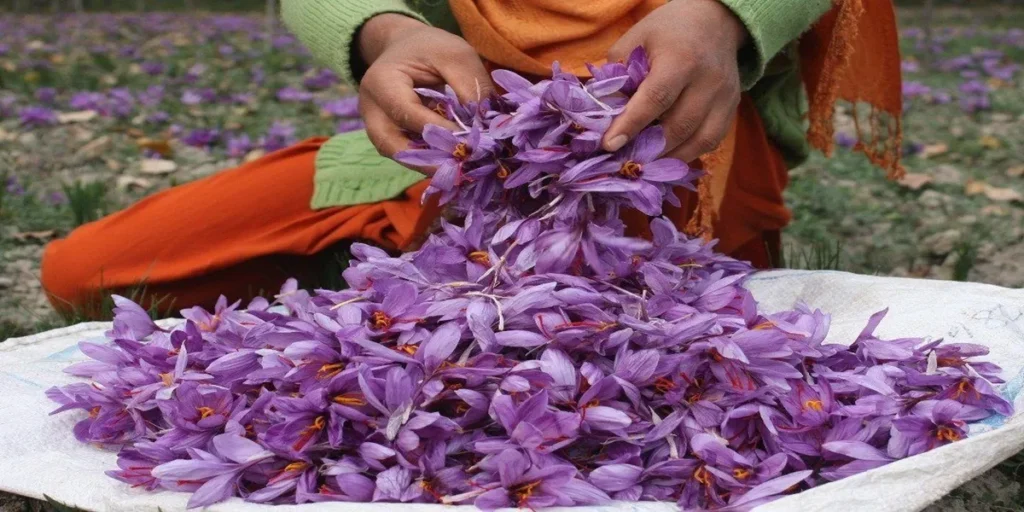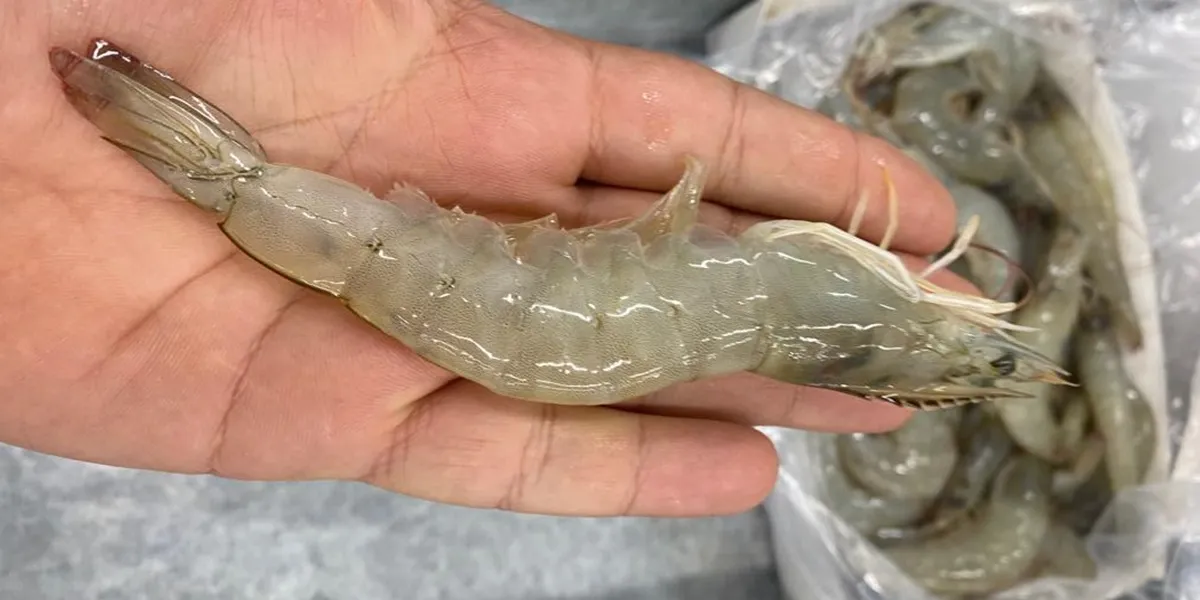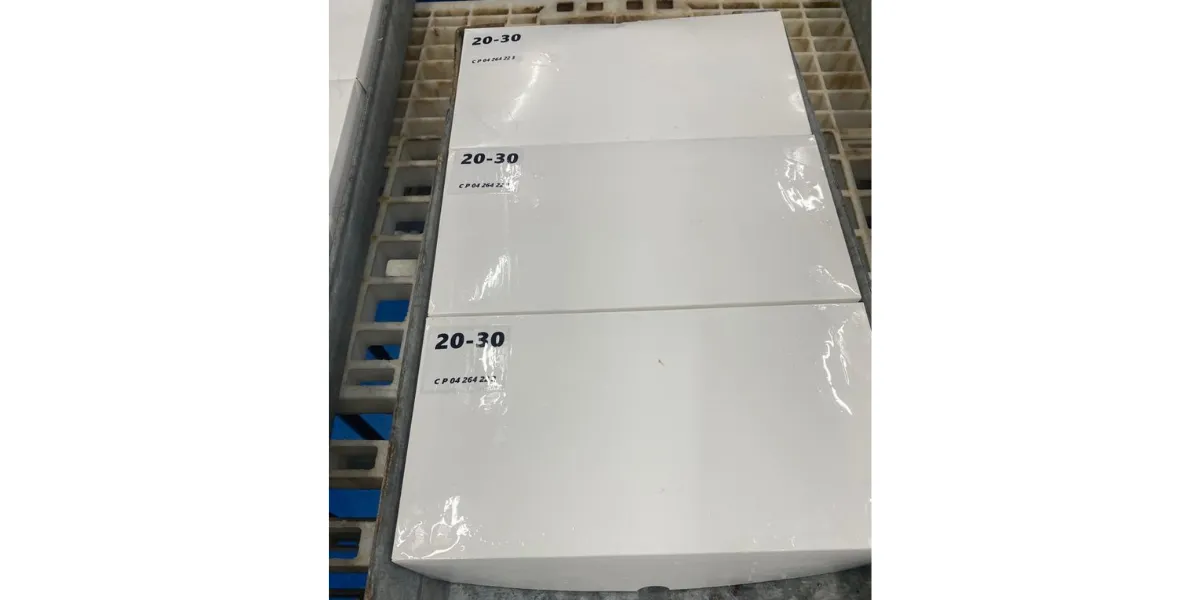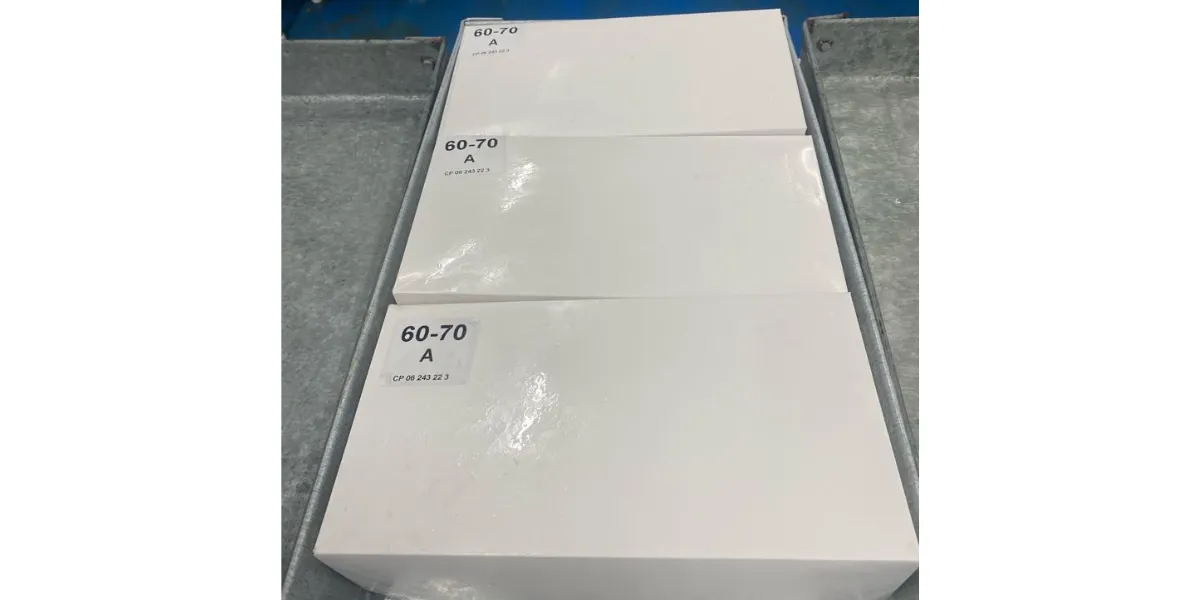Few natural ingredients carry the mystique and medicinal power of saffron.
Known as the “red gold” of the spice world, saffron has captivated civilizations for over 3,000 years — not because of its rarity, but because of its unparalleled flavor, aroma, and healing properties. Sourced from the delicate Crocus sativus flower, this thread-like stigma carries with it a rich legacy of culinary and therapeutic use across continents.
What makes saffron truly fascinating is its diversity of types — each with distinct flavor profiles, color intensity, and concentrations of active compounds like crocin, picrocrocin, and safranal. These elements not only influence the taste and aroma of dishes, but also contribute to saffron’s scientifically backed antioxidant, anti-inflammatory, and mood-enhancing effects. From the bold aroma of Iranian Negin to the deep red hue of Kashmiri Mongra, every variety tells a unique story rooted in geography and tradition.
Ready to explore the world’s finest saffron varieties and uncover their natural benefits? Let’s dive into the science, tradition, and wellness behind this powerful botanical treasure.
Saffron’s Price Tag Explained: What Makes It So Expensive?
The allure of saffron begins with its rarity — but what truly defines its value is the labor-intensive process behind every gram. Each Crocus sativus flower blooms for only a few days each year, and only three delicate stigmas can be harvested from each blossom. This means tens of thousands of flowers must be hand-picked — usually at dawn — just to produce one pound of saffron.
The high cost is not merely a result of rarity. Factors like climate conditions, soil quality, manual harvesting, and post-harvest drying techniques contribute significantly to saffron’s final market value. In regions where the flowers are grown organically, the care and precision add to both quality and production time.
Additionally, the Global saffron market is influenced by supply chain limitations, regional regulations, and political dynamics, particularly in Iran, which dominates the world’s production. Saffron’s value is further impacted by the standardization of quality using ISO grading systems. The highest grades — with vivid red threads and strong aroma — are limited in supply, creating demand among chefs, wellness industries, and cosmetic brands.
But ultimately, saffron’s price isn’t just about what it costs — it’s about what it represents: a synthesis of tradition, biology, geography, and human craftsmanship. That’s why even in modern economies, this ancient spice remains one of the most prized substances traded internationally.
Where Luxury Grows: Countries Producing the Priciest Saffron
Though many countries cultivate saffron, only a select few produce varieties that are internationally recognized for their superior aroma, color, and chemical makeup. Chief among them are Iran, Spain, India (specifically Kashmir), Afghanistan, and Morocco. Each region offers its own distinct take on the Crocus sativus flower, shaped by local climate, elevation, and soil composition.
Iran leads in volume and consistency, with regions like Khorasan known for producing Negin and Sargol saffron — both revered for their deep color and strong aroma. Spain’s La Mancha region, by contrast, is famed for its Coupe saffron, which is slightly milder but highly consistent in quality and ISO ratings. Kashmiri saffron, known as Mongra, grows at high altitudes and yields thicker stigmas with a darker tone, resulting in intense aroma and limited availability.
Morocco’s Taliouine region, though smaller in production, delivers saffron with a distinct earthy flavor and orange-red hue. Afghanistan, with traditional farming practices and ideal altitudes, has also emerged as a rising competitor in luxury saffron markets.
Cultural heritage also influences saffron production. In many of these countries, saffron farming is done by hand and passed down through generations, contributing to the craftsmanship embedded in each strand.
While pricing is a sensitive topic, what truly sets these nations apart is their dedication to purity, organic farming, and preserving saffron’s original uses — especially in gastronomy. If you’re looking to Use saffron in cooking, understanding its origin helps in choosing the right profile: bold and earthy for rice dishes, floral and mild for desserts, or intense and spicy for fusion cuisine.
Taliouine to Khorasan: How Region Affects Flavor and Price
From the saffron fields of Morocco’s Taliouine to the vast plains of Iran’s Khorasan, geography plays a central role in defining saffron’s characteristics. Each region offers a unique microclimate, influencing everything from the size and color of stigmas to the intensity of aroma and concentration of active compounds like crocin, picrocrocin, and safranal.
Iran’s Khorasan region stands out due to its high altitude, well-drained soil, and optimal temperature variations. The saffron here is renowned for its deep red color, intense aroma, and high crocin content, which contributes to its vibrant hue. Moroccan saffron from Taliouine, though less intense in color, has a distinct earthiness and floral complexity that’s highly valued in North African and Mediterranean cuisine.
Meanwhile, Spain’s Castilla-La Mancha saffron tends to be milder in taste but very consistent in texture and purity. Kashmir’s saffron is perhaps the rarest, growing at altitudes above 1,600 meters. Its darker stigmas and rich fragrance make it desirable for perfumery and traditional medicine.
These regional differences not only influence flavor and fragrance but also affect how saffron is used in cultural rituals and therapeutic settings. In Ayurveda, for instance, Kashmiri saffron is often used for its supposed calming and anti-depressant effects, while in Moroccan folk medicine, saffron is infused in teas for its digestive and detoxifying properties.
When discussing the Health benefits of saffron, it’s essential to link them back to the region of origin. The concentration of bioactive elements varies significantly, meaning not all saffron delivers the same potency. Understanding these nuances allows consumers to choose saffron based not just on cuisine, but on wellness goals too.

Pure Gold: How Saffron is Harvested and Graded
Harvesting saffron is an ancient art that requires remarkable precision. Each Crocus sativus flower contains just three crimson-red stigmas, which must be collected by hand during the brief flowering window in early autumn — often before sunrise. Timing is everything: the flowers bloom for only a few days, and if missed, the stigmas lose their potency and color.
Once picked, the stigmas are carefully dried — a step that determines the final flavor, aroma, and color strength. Drying methods vary by region, from sun drying on mesh trays to oven-drying under controlled heat. Even a slight difference in humidity or temperature can influence the resulting saffron’s quality.
To ensure transparency and authenticity, saffron is graded according to ISO 3632 standards, which evaluate aroma (safranal), taste (picrocrocin), and color (crocin). Grade I saffron features vivid red stigmas with no yellow styles and a crocin value of 190+ — ideal for culinary and medicinal uses. Lower grades may have mixed threads or reduced aroma.
However, the saffron industry faces a growing challenge: how to Spot fake saffron. Adulteration is rampant, involving dyed corn silk, synthetic threads, or even ground turmeric passed off as real saffron. To protect buyers, reputable brands now include lab reports, QR code traceability, and tamper-proof packaging.
Consumers are also encouraged to test at home using simple tricks: real saffron slowly releases golden color in warm water, not red, and should smell like a mix of hay and honey. Whether you’re a chef or a wellness enthusiast, knowing how saffron is harvested and graded empowers you to identify the true “red gold.”
Iranian Saffron’s Global Reign: Why It Leads the Market
Iran is not just the largest producer of saffron — it is the cultural and scientific epicenter of the saffron world. With over 85% of the global supply, Iran’s dominance is rooted in its ideal growing conditions, centuries-old farming traditions, and sophisticated processing techniques that preserve purity and potency.
The northeastern province of Khorasan is home to some of the finest saffron farms in the world. The region’s high elevation, sandy loam soil, and extreme day-night temperature shifts create perfect conditions for saffron cultivation. Varieties like Negin, Sargol, and Pushal are globally recognized for their exceptional quality. Negin saffron, in particular, is prized for its long, thick stigmas, intense fragrance, and high concentration of crocin.
What sets Iranian saffron apart is not just the volume, but the commitment to quality. Farmers often hand-harvest the stigmas with minimal mechanization to avoid damage. Advanced drying methods — including hybrid solar systems and tunnel dryers — ensure the preservation of color and aroma.
In the global saffron market, Iran remains the standard against which all other saffron is measured. Its saffron is used in luxury perfumery, herbal medicine, and culinary applications across the Middle East, Europe, and Asia. International buyers actively seek Iranian grades because of their consistent chemical profiles and traceability.
Despite geopolitical challenges and export restrictions, Iranian saffron maintains its dominance through sheer quality and tradition. For connoisseurs and health seekers alike, it represents the gold standard of what saffron can and should be.
The Kashmiri Crocus: Why This Variety Costs a Fortune
Kashmiri saffron, derived from the Crocus sativus flower, is renowned for its deep crimson hue and potent aroma. Grown in the high-altitude regions of Kashmir, this variety benefits from the unique climatic conditions of the area, which contribute to its distinct quality. The stigmas are longer and thicker, resulting in a higher concentration of crocin, picrocrocin, and safranal—compounds responsible for saffron’s color, taste, and aroma. These attributes make Kashmiri saffron highly sought after for culinary and medicinal purposes. The cultivation process is labor-intensive, with each flower handpicked during a short blooming period, ensuring the preservation of its delicate properties. The combination of unique growing conditions and meticulous harvesting practices contributes to the exceptional quality of Kashmiri saffron.
Wikipedia
Beyond Borders: How Export Restrictions Drive Up Prices
Export regulations and trade policies significantly impact the global saffron market. Countries like Iran, which produce a substantial portion of the world’s saffron, face various export restrictions due to international sanctions and domestic policies. These limitations can lead to supply shortages in international markets, affecting availability and consistency. Furthermore, stringent quality control measures and certification requirements in importing countries can delay the distribution process. Such regulatory hurdles not only affect the supply chain but also influence the strategic decisions of producers and exporters. Understanding these dynamics is crucial for stakeholders aiming to navigate the complexities of the saffron trade effectively.
Lab-Tested Luxury: How to Authenticate Premium Saffron
Authenticating saffron’s purity is essential to ensure its quality and efficacy. Laboratory testing plays a pivotal role in this process. Techniques such as UV-Visible spectrophotometry assess the concentration of key compounds like crocin, picrocrocin, and safranal. These tests determine the saffron’s coloring strength, bitterness, and aroma, respectively. Additionally, microscopic analysis can identify adulterants or contaminants, ensuring the saffron’s integrity. Reputable laboratories provide certification based on international standards, offering consumers confidence in the product’s authenticity. By relying on lab-tested saffron, consumers and businesses can guarantee the spice’s quality for culinary, medicinal, or cosmetic applications.
Wikipedia
Price vs. Purity: Is Expensive Saffron Always Better?
While price can be an indicator of saffron’s quality, it is not the sole determinant. High-quality saffron possesses specific characteristics: vibrant red stigmas, a strong aroma, and a distinct flavor profile. However, some products may be overpriced due to branding or packaging, without corresponding quality. Conversely, reasonably priced saffron from reputable sources can offer excellent purity and potency. It’s essential to assess saffron based on standardized quality metrics, such as ISO 3632 certification, rather than price alone. Consumers should seek transparency regarding the saffron’s origin, harvesting methods, and laboratory test results to make informed decisions. Ultimately, understanding the relationship between price and purity ensures value and authenticity in saffron purchases.
Where to Buy the World’s Best Saffron Safely Online
Purchasing premium saffron online requires diligence to ensure authenticity and quality. Reputable online retailers provide detailed information about the saffron’s origin, harvesting practices, and quality certifications. Look for vendors that offer ISO 3632 certification and transparent lab test results. Customer reviews and third-party endorsements can also provide insights into the product’s reliability. Additionally, secure payment options and clear return policies are indicators of trustworthy sellers. By prioritizing these factors, consumers can confidently acquire high-quality saffron that meets their culinary or medicinal needs.
Final Section: Unlocking Nature’s Treasure: Why Saffron Is More Than Just a Spice
Saffron is far more than a vibrant culinary ingredient — it is a botanical powerhouse with a rich spectrum of health-enhancing properties. Across cultures and centuries, different types of saffron have been used not just for flavor, but to support mood, digestion, eye health, and even cognitive function. Scientific research continues to validate what traditional medicine has long known: saffron is one of nature’s most potent and versatile natural remedies.
Whether you’re drawn to the bright red strands of Iranian Sargol or the earthy aroma of Spanish Coupe, understanding saffron’s types and benefits allows you to choose more intentionally — for wellness, tradition, or simply a richer experience at your table.
Stay with us as we take you deeper into the world of saffron’s most prized varieties and their scientifically backed uses.




